#new species of frog
Explore tagged Tumblr posts
Text
Meet the seven new frog species we just named after iconic Star Trek captains!
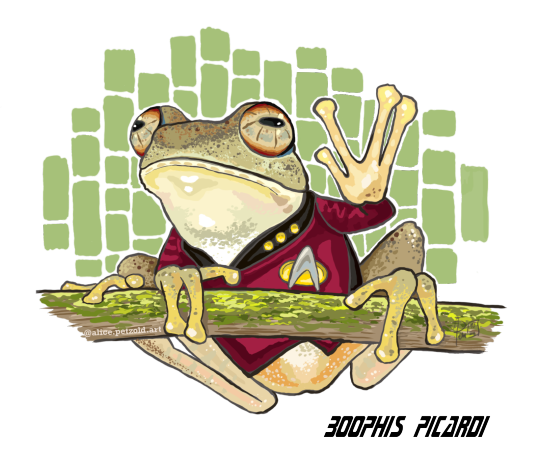
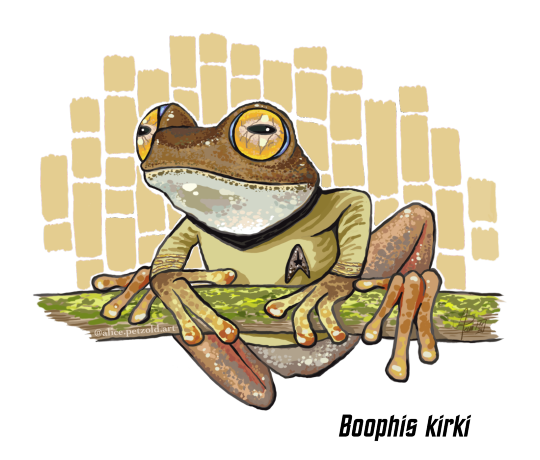
Artwork by A. Petzold, CC BY-ND 4.0
At the right time of year along rushing streams in the humid rainforests that stretch the length of Madagascar's eastern and northern mountain ridges, otherworldly trills of piercing whistles can be heard.
Are they birds? Insects? Communicator beeps? Tricorder noises?
No, they're little treefrogs!
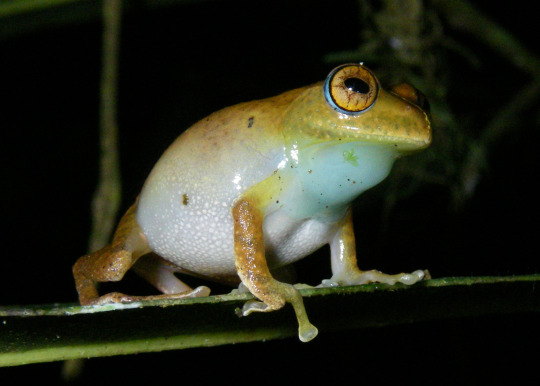
Boophis janewayae. Photo by M. Vences, CC BY-SA 4.0
Until recently, we thought all of the populations of these little brown frogs across the island were one widespread species, Boophis marojezensis, described in 1994. But genetics in the early 2000s and 2010s showed that there were several species here, not just one.
Now my colleagues and I have shown that they are in fact eight separate species, each with unique calls!
These whistling sounds reminded us so much of Star Trek sound effects that we decided to name the seven new species after Star Trek captains: Boophis kirki, B. picardi, B. janewayae, B. siskoi, B. pikei, B. archeri, and B. burnhamae.
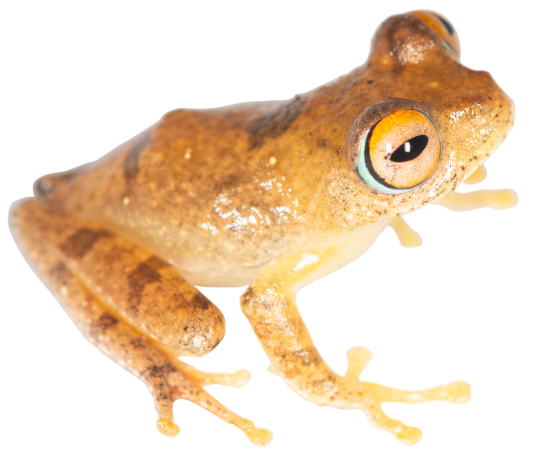



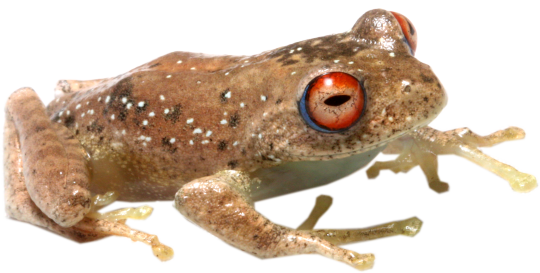


Photos of all new species described by Vences et al. 2024. CC BY-SA 4.0
I subtly and not-so-subtly built some Star Trek references into the paper, but probably the best one is this one:
'Finding these frogs sometimes requires considerable trekking; pursuing strange new calls, to seek out new frogs in new forests; boldly going where no herpetologist has gone before.'
— Vences et al. 2024
There’s a real sense of scientific discovery and exploration here, which we think is in the spirit of Star Trek.
Of course, it doesn't hurt that there are at least two Trekkies amongst the authors (including yours truly). As fans of Star Trek, we are also just pleased to dedicate these new species to the characters who have inspired and entertained us over the decades.
On a personal note, this marks a milestone for me, as it means I have now described over 100 frog species! I am very pleased that the 100th is Captain Janeway's Bright-eyed Frog, Boophis janewayae (if you count them in order of appearance in the paper)—she is probably my favourite captain, and I really love Star Trek: Voyager.
You can read more about the discovery of these new species on my website! You can also read the Open Access paper published in Vertebrate Zoology here.
#news#breaking news#Star Trek#new species#science#animals#WAKE UP BABE NEW FROGS JUST DROPPED#Boophis#Boophis janewayae#Boophis burnhamae#Boophis siskoi#Boophis pikei#Boophis archeri#Boophis kirki#Boophis picardi#in which nerds bring their nerdiness to work#Engage#WERE YOU WATCHING THIS SPACE?#THE FINAL FRONTIER?#DID YOU GET THE REFERENCE‽#Every time I have used that tag it has made me giddy with glee#you thought I was just goofin'#but I was FORESHADOWING#There's frogs in that nebula
8K notes
·
View notes
Text
"For over a decade, the Yosemite toad has been recognized as a federally threatened species, after experiencing a 50% population decline during the Rim Fire of 2013.
The wildfire, which encompassed a mass of land near Yosemite National Park, made the amphibian species especially vulnerable in its home habitat.
Native to the Sierra Nevada, the toads play a key role in the area’s ecosystem — and conservationists stepped in to secure their future.
In 2017, the San Francisco Zoo’s conservation team began working with the National Park Service, Yosemite Conservancy, U.S. Fish & Wildlife Service, California Department of Fish & Wildlife, and the U.S. Geological Survey.
The goal of all of these stakeholders? To raise their own Yosemite toads, re-establishing a self-sustaining population in the wild.

“Over the past several years, SF Zoo’s conservation team has been busily raising hundreds of these small but significant amphibians from tadpole stage, a species found only in the Sierra Nevada, for the purpose of reintroducing them to an area of Yosemite National Park where it was last seen 11 years ago,” the zoo shared on social media.
By 2022, a group of toads were deemed ready for release — and at the end of June of this year [2024], 118 toads were flown via helicopter back to their habitat.
“It’s the first time anyone has ever raised this species in captivity and released them to the wild,” Rochelle Stiles, field conservation manager at the San Francisco Zoo, told SFGATE. “It’s just incredible. It makes what we do at the zoo every day worthwhile.”
Over the past two years, these toads were fed a diet of crickets and vitamin supplements and were examined individually to ensure they were ready for wildlife release.
Zoo team members inserted a microchip into each toad to identify and monitor its health. In addition, 30 of the toads were equipped with radio transmitters, allowing their movements to be tracked using a radio receiver and antenna.
The project doesn’t end with this single wildlife release; it’s slated to take place over the next five years, as conservationists continue to collect data about the toads’ breeding conditions and survivability in an ever-changing climate. They will also continue to raise future toad groups at the zoo’s wellness and conservation center...
While the future of the Yosemite toad is still up in the air — and the uncertainty of climate change makes this a particularly audacious leap of faith — the reintroduction of these amphibians could have positive ripple effects for all of Yosemite.
Their re-entry could restore the population balance of invertebrates and small vertebrates that the toads consume, as well as balance the food web, serving as prey for snakes, birds, and other local predators.
“Zoo-reared toads can restore historic populations,” Nancy Chan, director of communications at the San Francisco Zoo, told SFGATE.
Stiles continued: ��This is our backyard, our home, and we want to bring native species back to where they belong.”
-via GoodGoodGood, July 11, 2024
#yosemite#yosemite national park#california#united states#amphibian#frogs and toads#frogblr#frogposting#toadblr#toad#endangered species#wild animals#biodiversity#wildlife conservation#wildlife#good news#hope
1K notes
·
View notes
Text
Dandelion News - March 8-14
Like these weekly compilations? Tip me at $kaybarr1735 or check out my Dandelion Doodles!
1. Caribbean reef sharks rebound in Belize with shark fishers’ help

“Caribbean reef shark populations have rebounded beyond previous levels, more than tripling at both Turneffe and Lighthouse atolls[…. The recovery] arose from a remarkable synergy among shark fishers, marine scientists and management authorities[….]”
2. Landmark Ruling on Uncontacted Indigenous Peoples’ Rights Strikes at Oil Industry

“[T]he Ecuadorian government [must] ensure any future expansion or renewal of oil operations does not impact Indigenous peoples living in voluntary isolation. [… E]ffective measures must be adopted to prevent serious or irreversible damage, which in this case would be the contact of these isolated populations,” said the opinion[….]”
3. America's clean-energy industry is growing despite Trump's attacks. At least for now

“The buildout of big solar and battery plants is expected to hit an all-time high in 2025, accounting for 81% of new power generation[….] The industry overall has boomed thanks to falling technology costs, federal tax incentives and state renewable-energy mandates.”
4. Study says endangered Asian elephant population in Cambodia is more robust than previously thought
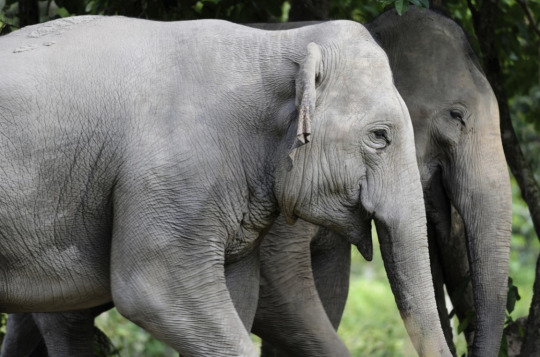
“A genetic study of Asian elephants […] reveals a larger and more robust population than previously thought, raising hopes the endangered species could slowly recover. […] “With sufficient suitable habitat remaining in the region, the population has the potential to grow if properly protected,” the report concludes.”
5. Scientists are engineering a sense of touch for people who are paralyzed

“[Engineers are] testing a system that can restore both movement and sensation in a paralyzed hand. [… A]fter more than a year of therapy and spinal stimulation, [… h]is increased strength and mobility allow him to do things like pet his dog. And when he does, he says, "I can feel a little bit of the fur."“
6. Florida is now a solar superpower. Here’s how it happened.

“In a first, Florida vaulted past California last year in terms of new utility-scale solar capacity plugged into its grid. It built 3 gigawatts of large-scale solar in 2024, making it second only to Texas. And in the residential solar sector, Florida continued its longtime leadership streak.”
7. Rare frog rediscovered after 130 years
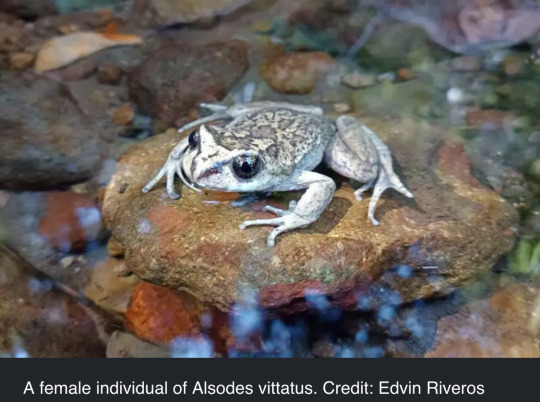
“The researchers discovered two populations of the frog[….] "The rediscovery of A. vittatus allowed us to obtain, more than a century after its description, the first biological and ecological data on the species.” [… S]hedding light on where and how they live is the first step in protecting them.”
8. Community composting programs show promise in reducing household food waste

“The program [increased awareness and reduced household waste, and] also addressed common barriers to home composting, including pest concerns and technical challenges that had previously discouraged participants from composting independently.”
9. Pioneering Australian company marks new milestone on “mission” to upcycle end-of-life solar panels
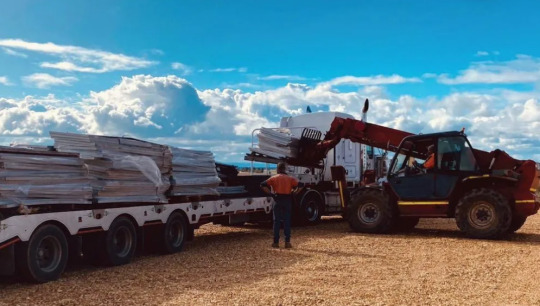
“[…] SolarCrete – a pre-mixed concrete made using glass recovered from used solar panels – will form part of the feasibility study[….] A second stage would then focus on the extraction of high value materials[…] for re-use in PV and battery grade silicon, [… and] electrical appliances[….]”
10. Beavers Just Saved The Czech Government Big Bucks
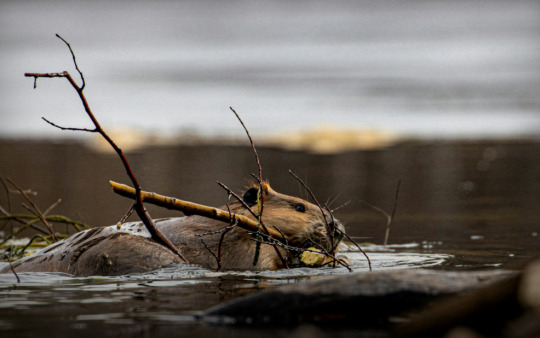
“The aim was to build a dam to prevent sediment and acidic water from two nearby ponds from spilling over, but the project was delayed for years due to negotiations over land use[….] Not only did the industrious rodents complete the work faster than the humans had intended, they also doubled the size of the wetland area that was initially planned.”
March 1-7 news here | (all credit for images and written material can be found at the source linked; I don’t claim credit for anything but curating.)
#hopepunk#good news#shark#fishing#nature#ecuador#first nations#oil drilling#clean energy#solar energy#solar power#elephants#elephant#conservation#animals#science#medicine#paralyzed#florida#solar panels#frogs#endangered species#endangered#compost#community#australia#recycling#beaver#habitat restoration#beaver dam
141 notes
·
View notes
Text


This is Boophis Pikei,
https://www.newscientist.com/article/2451789-seven-newly-named-frog-species-make-whistles-that-sound-like-star-trek/
198 notes
·
View notes
Text
Hyloscirtus tolkieni
Also known as Tolkien Frog
A new species of frog has been described from the tropical Andes of Ecuador and was named after the well known fantasy author J.R.R. Tolkien.
The scientists who published the first description of the species (Juan C. Sánchez-Nivicela, José M. Falcón-Reibán, and Diego F. Cisneros-Heredia) said that they named the frog after Tolkien because “the amazing colours of the new species evoke the magnificent creatures that seem to only exist in fantasy worlds."




They also paraphrase The Hobbit in the introduction of their paper (see photo 4)
The adult frogs appear to be nocturnal animals
#interesting facts#science#i love science#tolkien#middle earth#the hobbit#the lord of the rings#smaug the dragon#frog#wild animals#animals#new species#halloween#bilbo baggins#thorin x bilbo#biology#interesting#jrr tolkien#fantasy books#books
97 notes
·
View notes
Text
A Leap of Hope: Endangered Frogs First Seen by Charles Darwin Give Birth in London to Help Avoid Extinction https://www.goodnewsnetwork.org/endangered-frog-first-seen-by-charles-darwin-gives-birth-in-london-to-help-avoid-extinction-of-species/

#good news#environmentalism#science#environment#nature#animals#london#england#frogs#endangered species#endangered animals#conservation
54 notes
·
View notes
Text

Oregon’s first amphibian underpass: Northern red-legged frogs get safe passage under Hwy 30
The issue of wildlife crossings, whether over or under highways and other roads, often comes up most prominently in respect to charismatic megafauna like deer, bears, and cougars (most famously Los Angeles' P-22). But many other species benefit from these crossings and other efforts to increase habitat connectivity.
The northern red-legged frog (Rana aurora) is a common amphibian in the Pacific Northwest west of the Cascades; though decreasing population numbers mean that it is now considered a federal species of concern. And like many animals, these frogs migrate seasonally; those in the story take refuge in the forests when the weather is hot, and then head to nearby wetlands once conditions cool so they can breed. The problem, of course, is that the forest and wetlands are divided by a busy highway in a metropolitan area, and unlike the old Atari game Frogger, no one gets a second chance once a car hits them.
The new underpass is big enough to accommodate not only frogs, but larger animals like raccoons and coyotes that may also want to get across the road safely. This isn't unusual; conservation methods meant to benefit one species very often help others as well. We frequently see cases where efforts are focused on larger, charismatic species, and their smaller neighbors' improvement is incidental. In this case, though, it's the often overlooked little frog who's helping to literally pave the way for many other wildlife species.
#frogs#amphibians#herps#herpetology#animals#wildlife#endangered species#extinction#nature#ecology#environment#conservation#science#scicomm#pnw#pacific northwest#Oregon#wildlife conservation#animal welfare#good news#hopepunk
75 notes
·
View notes
Text

Day 11 - Recent
#amphibiuary2024#recently discovered frog Sphaerotheca varshaabhu#drawing#nice to have a new frog species
74 notes
·
View notes
Text

"Rana Lapida Volucris" by Anna Tuomisalo
14 notes
·
View notes
Text
BOOPHIS SNOOT!
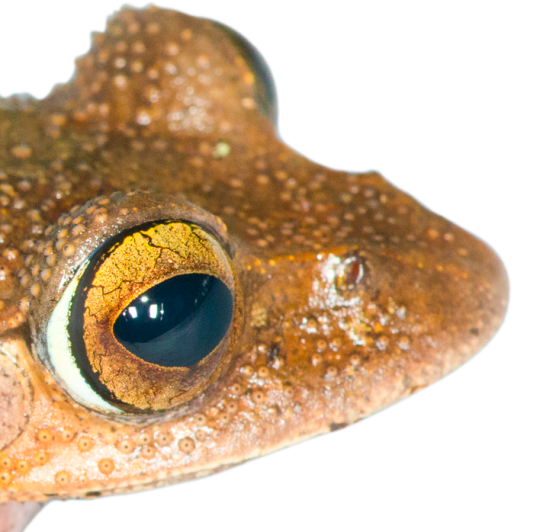
Specifically, an undescribed Boophis from the B. goudotii species group that I discovered in 2015/2016.
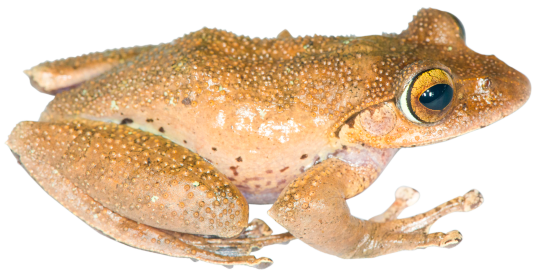
#boop#boop his snoot#Boophis#frog#frogs#a rare and serendipitous occasion#for this glorious pun#zoology#animals#herpetology#undescribed species#new species#taxonomy#I don't remember catching all the frogs I've ever caught#but I do remember catching this one#it was one or two metres above my head#and we had to whack the branch it was on to get it to come down#and then frantically search for it after it landed#I think it landed on someone's backpack in the end#a marvellous and bizarre creature#hopefully to be described in the next few years
3K notes
·
View notes
Text
Pairing frogs and toads together might conjure memories of Arnold Lobel’s beloved characters — dressed to the nines in caramel coats and polyester — biking off toward adventure.
But in the animal world, frogs and toads on nearly every continent are facing a much more harrowing adventure: a decades-long fight against a mysterious fungal virus that has afflicted over 500 amphibian species.
Since the 1990s, scientists estimate that the chytridiomycosis disease caused by the fungal pathogen Bd (Batrachochytrium dendrobatidis) has led to the extinction of 90 amphibians. One of the lost species includes the Panamanian golden frog, which hasn’t been spotted in the wild since 2009.
Fortunately, a new research study has finally pinpointed the virus that has been infecting fungal genomes for decades.
“Bd is a generalist pathogen and is associated with the decline of over 500 amphibian species…here, we describe the discovery of a novel DNA mycovirus of Bd,” wrote Mark Yacoub — the lead author of the study and a microbiology doctoral student at the University of California, Riverside.
In an interview with UC Riverside News, Yacoub said that he and microbiology professor Jason Stajich observed the viral genome while studying the broader population genetics of mycovirus (viruses of fungi).
The discovery will undoubtedly have monumental impacts on future amphibian conservation efforts. This includes the possible launching of new research studies into fungal species strains, the practice of cloning and observing spores, and engineering a solution to the virus.
But Yacoub cautioned that this is only the beginning.
“We don’t know how the virus infects the fungus, how it gets into the cells,” Yacoub said. “If we’re going to engineer the virus to help amphibians, we need answers to questions like these.”
Still, as scientists strengthen conservation efforts to save frogs and toads (and salamanders too!) they also appear to be saving themselves. Yacoub pointed out several amphibian species around the world have begun exhibiting resistance to Bd.
“Like with COVID, there is a slow buildup of immunity,” Yacoub explained. “We are hoping to assist nature in taking its course.”
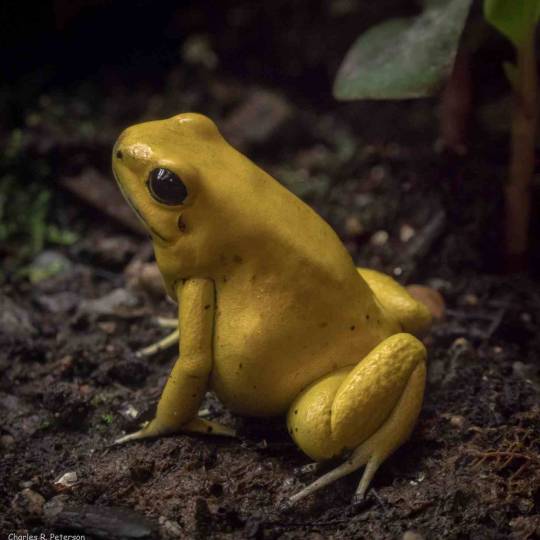
Pictured: A Golden poison frog — one of the many species endangered by chytridiomycosis — in captivity.
Why are frogs and toads so important?
From the get go, every amphibian species plays an important role in their local ecosystem. Not only are they prey for a slew of animals like lizards, snakes, otters, birds, and more, but in an eat-or-be-eaten world, frogs and toads benefit the food chain by doing both.
Even freshly hatched tadpoles — no bigger than a button — can reduce contamination in their surrounding pond water by nibbling on algae blooms.
As they grow bigger (and leggier), amphibians snack on whatever insect comes their way, greatly reducing the population of harmful pests and making a considerable dent in the transmission malaria, dengue, and Zika fever by eating mosquito larvae.
“Frogs control bad insects, crop pests, and mosquitoes,” Yacoub said. “If their populations all over the world collapse, it could be devastating.”
Yacoub also pointed out that amphibians are the “canary in the coal mine of climate change,” because they are an indicator species. Frogs and toads have permeable skin, making them sensitive to changes in their environment, and they also rely on freshwater.
When amphibians vanish from an ecosystem, it’s a symptom of greater environmental issues...
Herpetologist Maureen Donnelly echoed Yacoub’s sentiments in an interview with Phys Org, noting that when it comes to food chains, biodiversity, and environmental impact, the role of frogs and toads should not be overlooked.
“Conservation must be a global team effort,” Donnelly said. “We are the stewards of the planet and are responsible for all living creatures.”
-via GoodGoodGood, April 22, 2024
#frog#frogs#toads#frogs and toads#conservation#biodiversity#herpetology#mycology#fungi#endangered species#extinction#ecosystems#climate change#environment#biology#environmental science#ecology#good news#hope#frogblr#frog blogging
354 notes
·
View notes
Text
Dandelion News - August 22-28
Like these weekly compilations? Tip me at $kaybarr1735 or check out my new(ly repurposed) Patreon!
1. Safari park welcomes flamingo chicks

“An animal park has said it is experiencing a "baby boom", including new flamingo chicks that have hatched. Longleat Safari Park in Wiltshire has also recently welcomed rare Amur tiger cubs and an endangered cotton top tamarin monkey baby. [… Flamingos] live 15-20 years in the wild, however in captivity and safe from predators, they can reach ages of 70 years.”
2. Golf clubs fight biodiversity loss

“The project aims to help green-keepers create havens for wildlife, particularly bees and butterflies, as well as introduce mowing methods to protect rare chalk grassland and encourage wildflowers. […] “Clubs doing this are seeing significant increases in pollinators, such as butterflies, without impeding the game."”
3. ‘We’ve got baby owls again’: how farming policy is helping English wildlife

“[In Abby Allen’s] lush Devon fields native cattle graze alongside 400-year-old hedgerows, with birds and butterflies enjoying the species-rich pasture. [… The Environmental Land Management Scheme] pays farmers for things such as planting hedges, sowing wildflowers for birds to feed on and leaving corners of their land wild for nature.”
4. $440 Million to Support Pregnant and New Moms, Infants, and Children through Voluntary Home Visiting Programs
“Through this program […] trained health workers […] provide support on breastfeeding, safe sleep for babies, learning and communications practices that promote early language development, developmental screening, getting children ready to succeed in school, and connecting with key services and resources in the community – like affordable childcare or job and educational opportunities. […] In addition, the [CDC] announced a new investment of $118.5 million, over five years, to 46 states [and] six territories […] to continue building the public health infrastructure to better identify and prevent pregnancy-related deaths.”
5. Endangered leopard frogs released into the wild

“More than a hundred leopard frogs have been released into the wild at Columbia National Wildlife Refuge in Washington state. Leopard frogs are endemic to North America but have been classed as endangered since 1999.”
6. Heat-based batteries are a surprisingly versatile tool

“[T]hermal energy storage [… is] expected to be more cost-effective than conventional lithium-ion batteries for storing cheap clean electricity over longer durations[….] Thermal storage systems take up less space per unit of energy stored than lithium-ion batteries do, [… and] can also deliver their stored energy without the efficiency losses that occur in converting electricity from [AC to DC and back].”
7. Dolly Parton is sending free books to children across 21 states — and around the world

“[In 21 states,] all children under the age of 5 can enroll to have books mailed to their homes monthly. […] Since the program started, books have been sent to more than 240 million to [sic] kids in the U.S., Canada, the United Kingdom, Ireland and Australia.”
8. Biden-Harris Administration Awards $100 Million to Navigators Who Will Help Millions of Americans - Especially in Underserved Communities - Sign Up for Health Coverage
“The grants are part of a commitment of up to $500 million over five years - the longest grant period and financial commitment to date, and a critical boost for recruiting trusted local organizations to better connect with those who often face barriers to obtaining health care coverage. […] Navigators offer free assistance to people exploring health coverage options through HealthCare.gov, from reviewing available plans to assisting with eligibility and enrollment forms, and post-enrollment services such as using their coverage to get care.”
9. ‘Ultra-Accommodating’ Hotel Concept Goes Beyond ADA Accessible

“The property […] will feature wider hallways, larger guest rooms, easy access to elevators and other modifications that exceed the standards required under the [ADA]. Staff will be trained in disability etiquette, how to assist with mobility devices and provide various accommodations ranging from hearing aid loops to sensory-sensitive lighting. […] The location in San Antonio is expected to be the first — not the only one — developed under this concept.”
10. Melbourne zoo welcomes rare southern white rhino calf to the world

“Kipenzi and the new calf have been closely monitored this week, with mother and baby being kept in a secluded area accessible only to keepers while they get to know each other and bond. […] The calf has already been showing a forthright personality, snorting and stomping around his enclosure[….]”
August 15-21 news here | (all credit for images and written material can be found at the source linked; I don’t claim credit for anything but curating.)
#hopepunk#good news#flamingo#zoo#animals#tiger#monkey#golf#golf course#biodiversity#farming#farm#england#uk#pregnancy#education#reproductive health#healthcare#frogs#endangered species#washington state#energy storage#batteries#electricity#dolly parton#books#health insurance#accessibility#white rhino#rhino
29 notes
·
View notes
Text
27 new species of plants and animals including the harlequin frog. With over 2000 species recorded
2 notes
·
View notes
Note
Hey! I am absolutely IN LOVE with Mudborne. I played the first demo but I think I'm gonna reinstall it to see the new demo. I LOVED Apico, and I think I'm really gonna enjoy Mudborne. I can't wait till it comes out!
Thank you so much! Lots have changed since that first gamejam version, the new demo is much closer to what the game will be like - albeit a little bit information overload in some parts just so I can show off all the main mechanics in one go The starting region of the full game is what the demo is loosely based off but it'll be a bit more slower paced and handholdy before it then kicks you on your slimy butt and tells you to go work out the rest!
#also I think for people who liked apico#although the ui and some systems are the same#the genetics and the puzzle stuff are quite different#i think you'll still love it#but you definitely have to have a forget everything you know moment#as the frog genetics and bee genetics and getting new species is wildly different#mudborne#game development#ask
6 notes
·
View notes
Text
(lot of big frog wins)
For the first time in five years, northern corroboree frogs have been spotted in Namadgi National Park by ACT government ecologists.
The species is listed as critically endangered and the government has been attempting to restore their population in the park for more than a decade.
Ecologists have been releasing frogs and eggs into the park as part of a breeding program, but they had not been spotted in the wild since 2019.
This year, 16 male frogs were identified at the Ginini Flats Wetlands site and a further 21 frogs were counted at a lower elevation site in the park. "Having not seen these frogs in the wild since 2019, we were beginning to think all hope was lost, and that the species was close to extinction," Environment Minister Rebecca Vassarotti said.
She told ABC Radio Canberra the frogs were under pressure due to many issues including climate change, habitat loss and the invasive chytrid fungus.
That deadly fungus affects the frogs' skin and stops them from being able to take in water and important salts.
Ms Vassarotti said ecologists had been experimenting with the breeding program and releasing frogs in different areas to see if they could make a difference.
"We've been ... releasing eggs in some other areas in Namadgi, where they hadn't previously been seen," she explained.
"These were at slightly lower elevations. And the reason we were doing that is that they were elevations where there wasn't such an impact of this awful fungus."Ms Vassarotti said this was an "exciting" development but acknowledged there was more work to be done through the breeding program.
"Australia is the extinction capital of the world," Ms Vassarotti said in a statement.
"Way too often, climate change and human impact on the environment has resulted in us losing unique species permanently as they become extinct.
"I've been heartbroken to have to continue to list species as close to extinction.
"The identification of new northern corroboree frogs across a range of sites restores my confidence that we can save this incredible frog that is so unique to our region."
#good news#frogs#environmentalism#science#environment#nature#animals#australia#endangered species#conservation#climate change#climate crisis#parks
70 notes
·
View notes
Text
youtube
Ecuador is one of the most biodiverse places on the planet—a country about the size of Nevada that’s home to more than twice the number of plant and animal species as the United States and Canada combined. Yet its wild spaces—rich in gold, timber, and fertile soil for large-scale agriculture—are also among the world’s most threatened. In 2008, when Ecuador became the first country in the world to enshrine a revolutionary concept called the “rights of nature” in its constitution, conservationists gained perhaps their most powerful tool for protecting wild spaces. Today, that tool is being put to the test as advocates race to preserve habitats and the remarkable species they support.
#Nature on PBS#wild hope#solarpunk#Ecuador#conservation#mining#endangered species#indigenous#orchids#spider#lizard#salamander#frog#bird#new species#native species#Youtube
8 notes
·
View notes